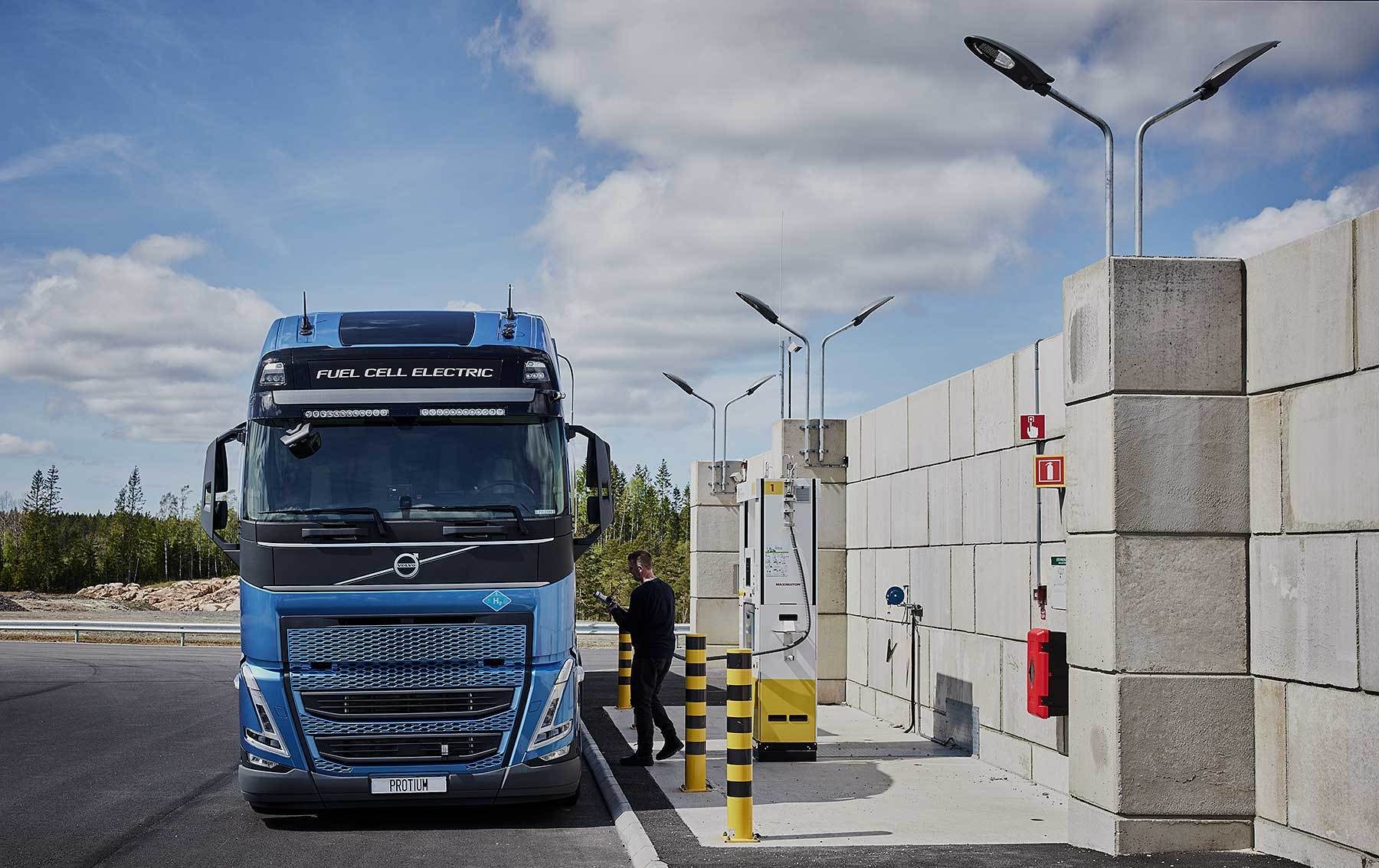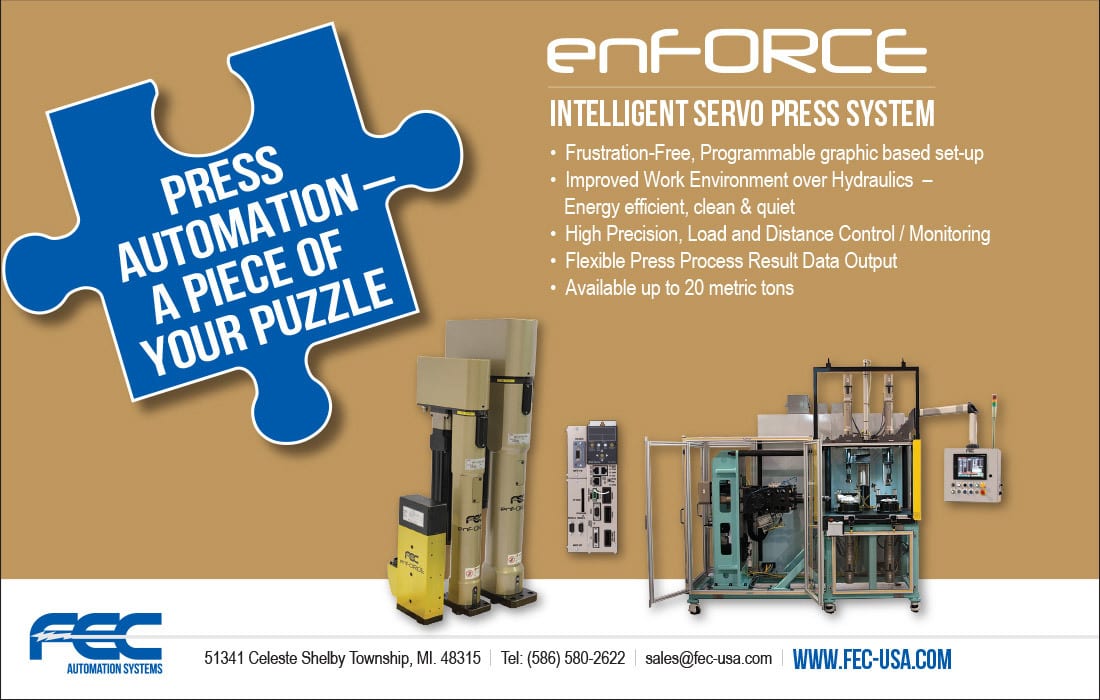Long-distance trucking is a prime candidate for fuel cell technology. Photo courtesy Hyundai Motor Co.

Fuel cells offer tremendous potential as a clean power source. The chemical energy of hydrogen and oxygen reacts with fuel cells and converts the energy to electricity. The decades-old technology is ideal for a wide variety of applications, including stationary power stations and many forms of transportation.
A single fuel cell consists of an electrolyte sandwiched between two electrodes. Bipolar plates on either side of the cell help distribute gases and serve as current collectors. Fuel cells are easily scalable. Depending on the application, a fuel cell stack may contain hundreds of individual fuel cells layered together.
Automakers such as Honda, Hyundai and Toyota have already developed fuel cell electric vehicles (FCEVs), but the technology has been slow to catch on. Challenges include refueling infrastructure and lingering safety concerns.
However, hydrogen power still holds tremendous potential for other forms of next-generation mobility, including airplanes, buses, ships, trains and trucks. In fact, a recent study by Juniper Research claims that the number of hydrogen vehicles in service globally will exceed 1 million by 2027 vs. just over 60,000 in 2022.

This fuel cell powers electric buses, trucks and material handling equipment. Photo courtesy Nuvera Fuel Cells LLC
According to the National Renewable Energy Laboratory (NREL), transit buses are one of the best early transportation applications for fuel cell technology. That’s because buses operate in congested areas where pollution is already a problem. These buses are centrally located and fueled, highly visible and subsidized by local governments.
Autonomous and Electric Mobility recently askedBryan Pivovar, senior research fellow and fuel cell group manager in the Chemistry and Nanosciences Center at NREL, to explain some of the promises and pitfalls of hydrogen power.
Fuel cell stacks consist of a series of bipolar plates. Photo courtesy Plug Power Inc.
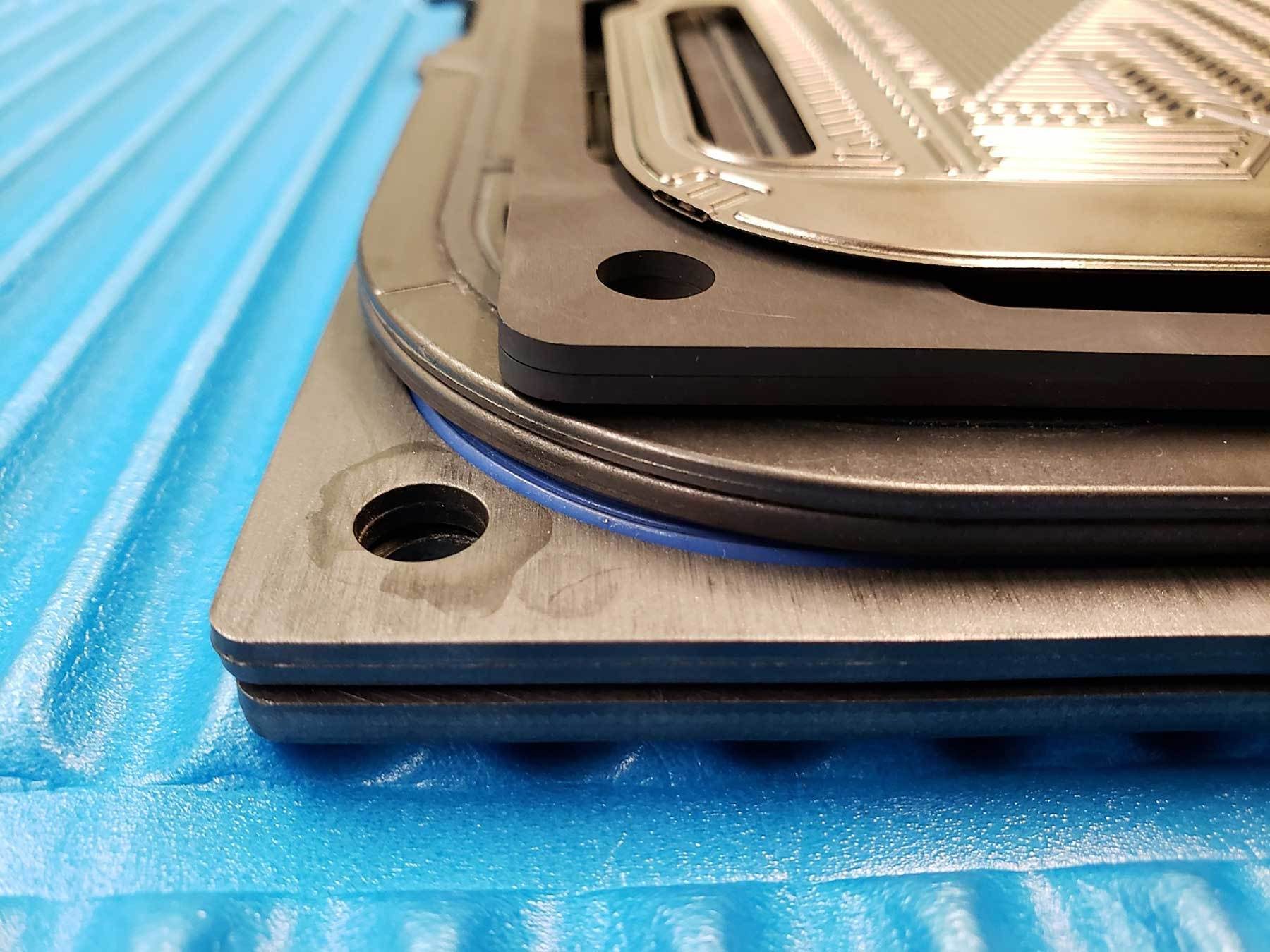
AEM: Why are fuel cells such an intriguing energy source for mobility engineers?
PIVOVAR: Fuel cell vehicles have some advantages over battery-powered vehicles. For instance, they can be refueled quickly. Because they’re fueled instead of charged, there’s fewer thermal challenges compared to fast charging. Fuel cells also have advantages over batteries when it comes to duty cycles. That’s why the technology has caught on with forklifts and other types of material handling equipment in large warehouses. Most of those applications involve polymer electrolyte membrane (PEM) fuel cells.
Engineers are focusing their R&D efforts on alkaline fuel cells. Photo courtesy National Renewable Energy Laboratory
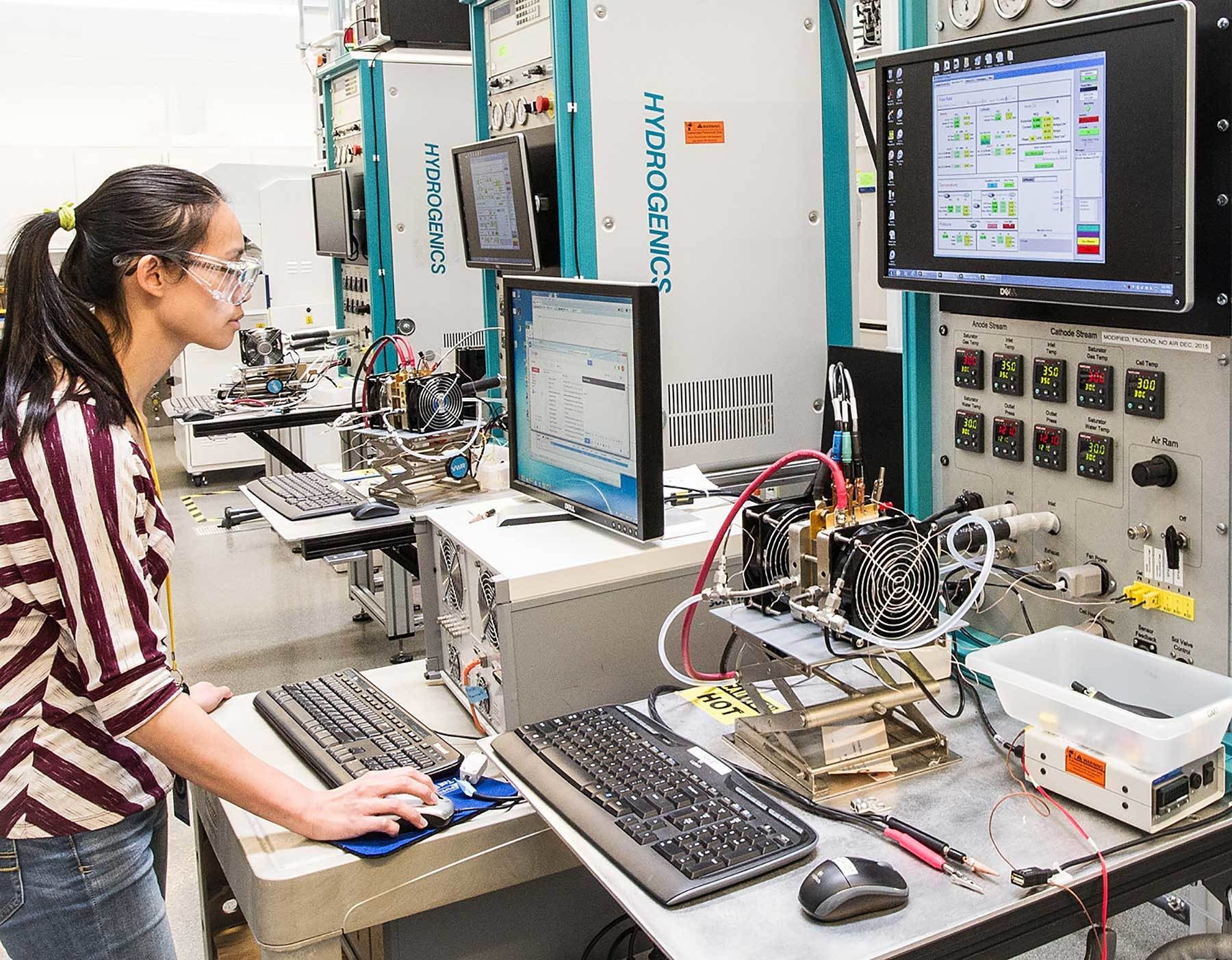
AEM: How do PEM fuel cells compare to lithium-ion batteries?
PIVOVAR: Both use electric drive systems with motors in the wheels. In addition, both technologies have low centers of gravity and can be packaged in vehicles in ways that internal combustion engines (ICEs) can’t. Low torque and traction aspects are comparable between fuel cells and batteries. However, scalability is still an issue that needs to be addressed. Up until about a year ago, the biggest fuel cell vehicle production lines were turning out 3,000 units a year. At that time, the cost was $200 to $250 a kilowatt. Today, some production lines have increased capacity to 30,000 units, which has decreased the cost per kilowatt by half. By comparison, lithium-ion batteries today are just at scale.
In the future, most buses will be powered by fuel cells. Photo courtesy Hyzon Motors

AEM: Do fuel cell vehicles require different types of electric motors and drivetrains than what’s used in battery-powered vehicles?
PIVOVAR: No, they’re the same. However, FCEVs require some more power electronics, because of the way that the fuel cell integrates with the electrical system.
Fuel cells are ideal for material handling equipment and airport ground support vehicles. Photo courtesy Plus Power Inc.

AEM: What has been the biggest breakthrough or development in FCEV technology in the last few years?
PIVOVAR: Transportation applications have been focusing on heavy-duty vehicles. That’s because there’s a real limitation in what battery-powered vehicles can do in continuous use sectors, such as hauling freight over long distances. Batteries still suffer from energy density issues. With batteries, energy storage and power are combined. Fuel cells are similar to traditional gas- or diesel-powered vehicles that can store fuel in different sized tanks. Power and energy are the same in batteries, whereas they’re decoupled in fuel cell and ICE vehicles. Batteries are great for light duty applications, such as urban package delivery vans, but fuel cells are better for use in Class 8 trucks.
The Coradia iLint is the world’s first passenger train powered by a hydrogen fuel cell, which produces electrical power for traction. Illustration courtesy Alstom SA
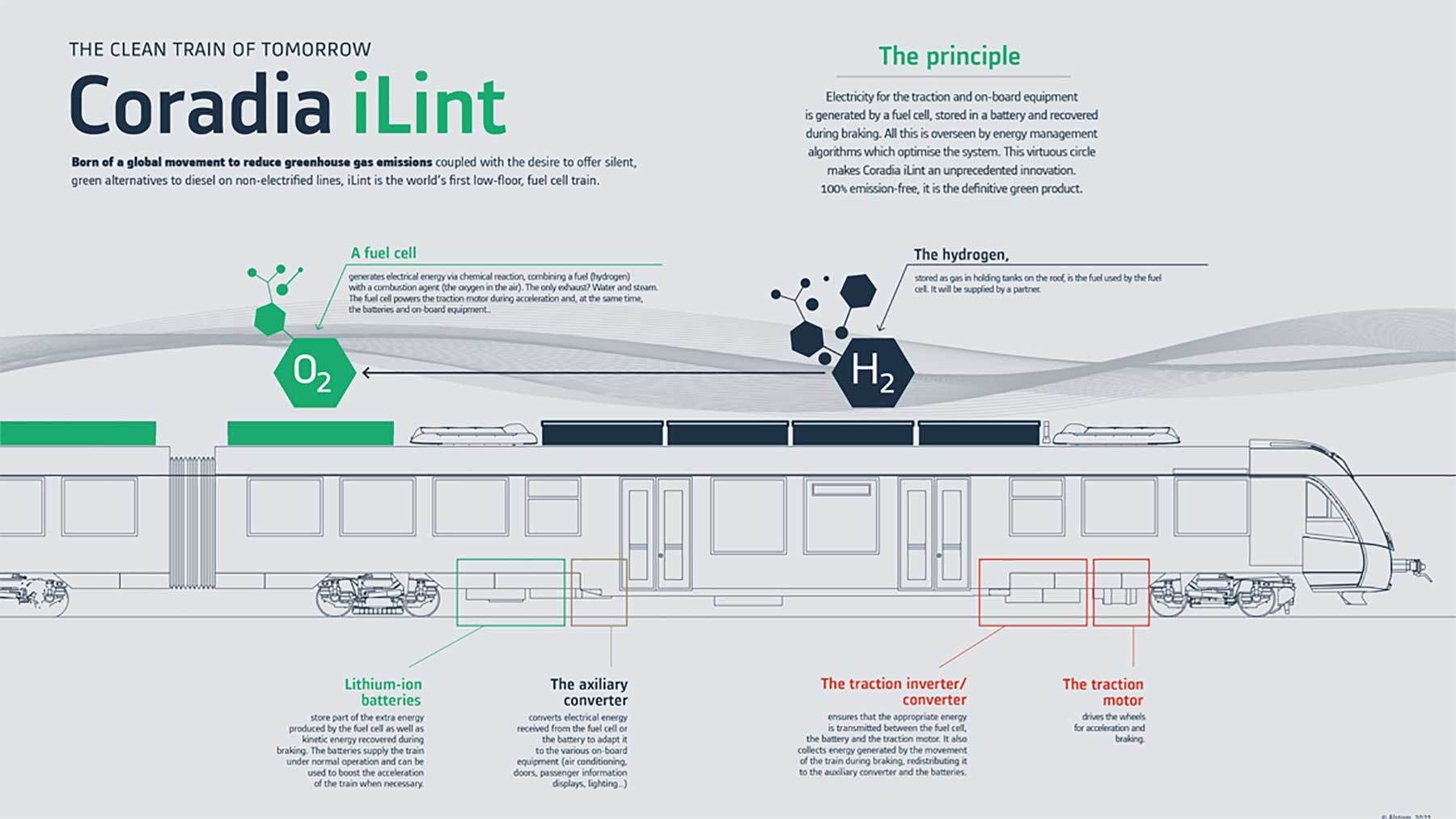
AEM: Why don’t we see more fuel cells used in mobility applications? What’s holding back this technology from widespread commercial use?
PIVOVAR: The No. 1 issue is hydrogen infrastructure and cost. Safety is not a huge challenge; it’s more of a public perception issue. Today, hydrogen is primarily used in oil refining and ammonia production. Hydrogen is added to oil to improve its energy content and it’s used to make ammonia for fertilizer. Most hydrogen is produced at dedicated plants and consumed nearby. Distributing and delivering hydrogen to parts of the United States beyond the Gulf States region is still prohibitively expensive. Most infrastructure for refueling hydrogen vehicles is currently in California, where there are approximately 50 stations supporting 10,000 fuel cell vehicles.
The recently unveiled Apricale hypercar runs on hydrogen. Photo courtesy Veritech
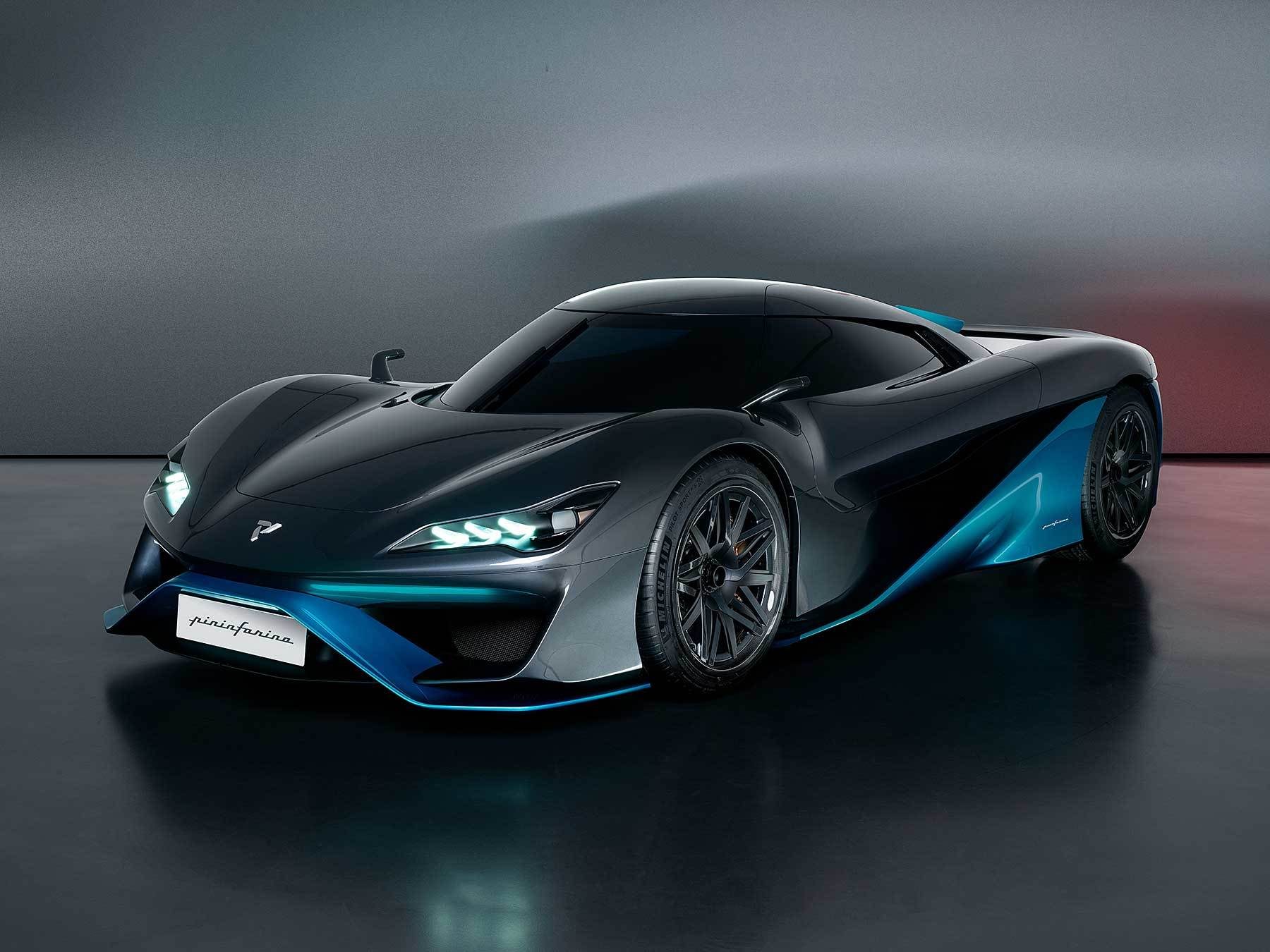
AEM: How far away are we from seeing wide-scale deployment of FCEVs on American roads?
PIVOVAR: Technologically speaking, it’s here today. The big question is what will happen in terms of infrastructure build out and manufacturing build out, similar to what happened with the evolution of the national electrical grid. There’s a bunch of politics involved and that complicates things.
A 600-kilowatt hydrogen fuel cell will power Otto Aviation’s Celera 500L passenger plane. Illustration courtesy ZeroAvia
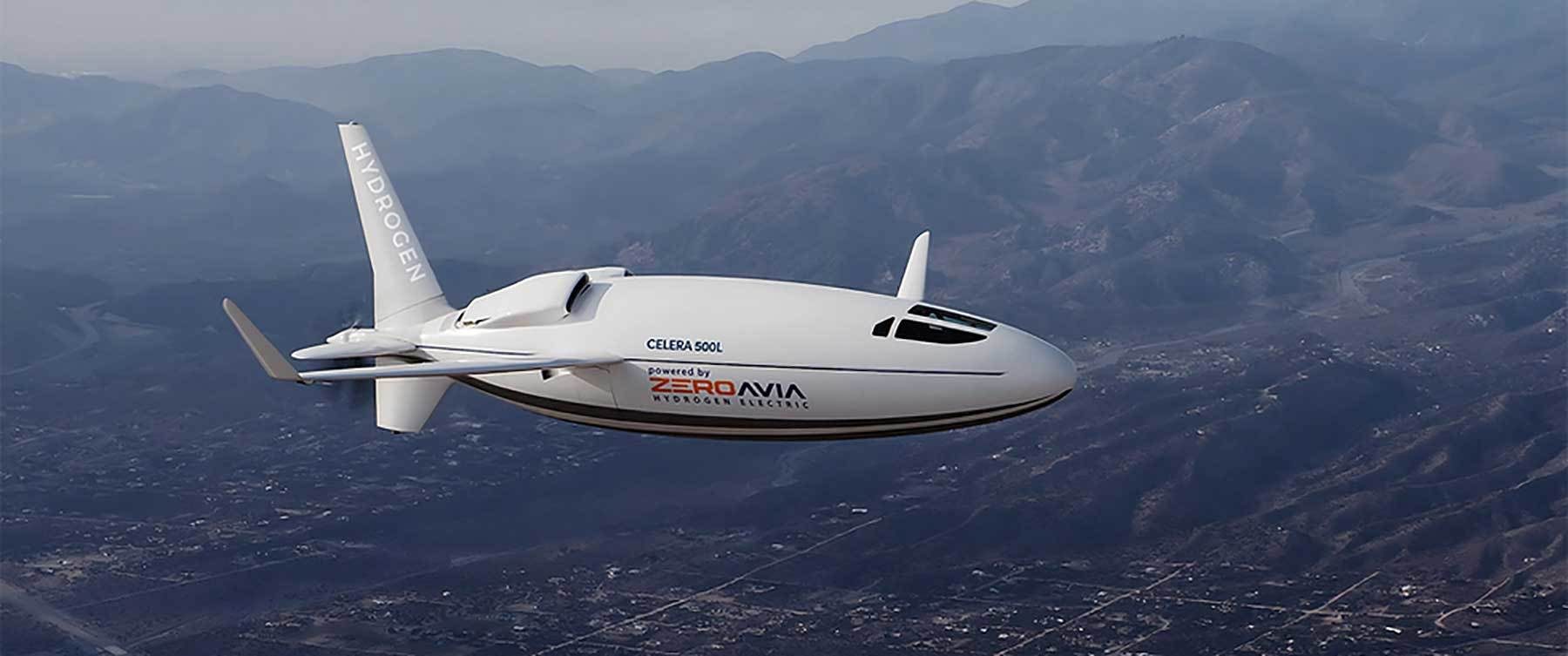
AEM: What segment of the mobility market holds the most potential for FCEV technology?
PIVOVAR: Heavy-duty trucking offers the most bang for the buck at the moment. However, there’s also growing interest in aviation and maritime applications.
Hyundai recently started to mass-produce fuel cell-powered trucks. Photo courtesy Hyundai Motor Co.
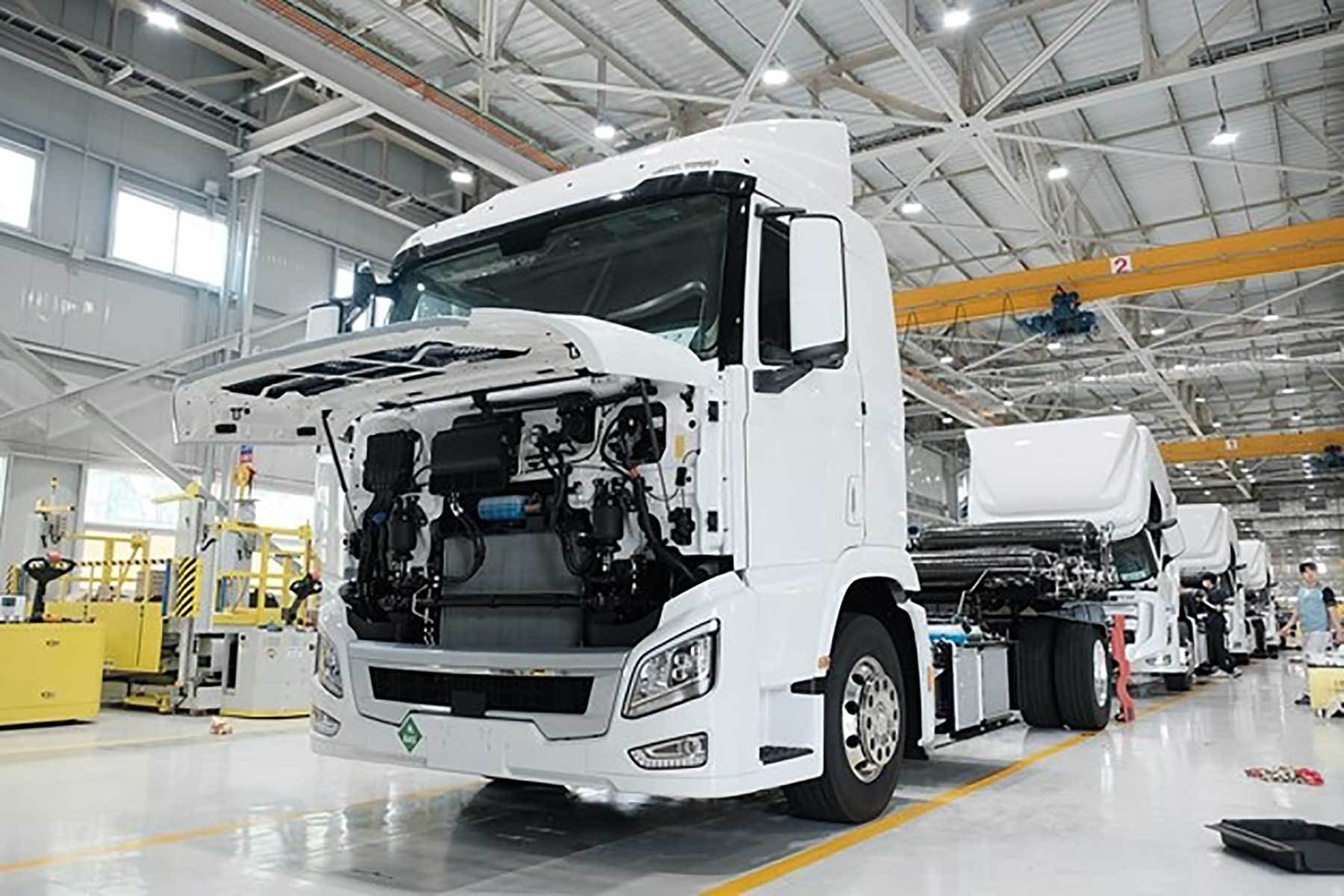
AEM: Why are transportation applications more challenging for fuel cells than stationary applications?
PIVOVAR: Some aspects of transportation are more challenging, because of weight. A light-duty vehicle only has to last for 3,000 hours of operation, while a stationary fuel cell has to last for 40,000 hours of operation, so there’s some give and take. To fit onboard vehicles, hydrogen tanks have to be either 350 or 700 bar. Tanks used for 700-bar applications must be stronger and more robust. To address weight, they must be made out of carbon-fiber composites instead of steel, which is used for stationary applications.
Fuel cell vehicles require hydrogen storage tanks. Photo courtesy Veritech
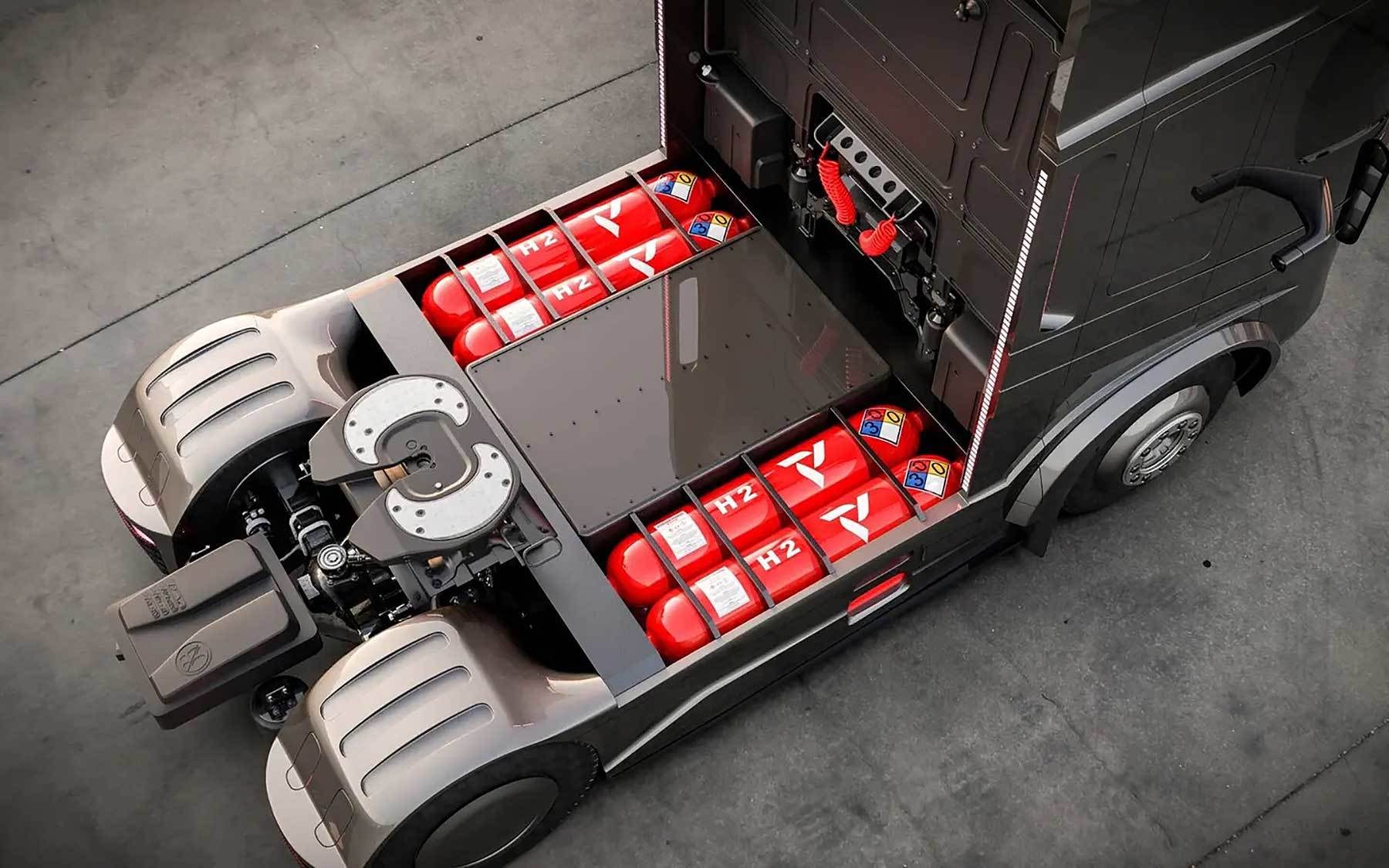
AEM: What fuel cell issues or challenges are you and your NREL colleagues focusing on today?
PIVOVAR: One of our main focus areas is the Million Mile Fuel Cell Truck (M2FCT) consortium. The Department of Energy funded initiative is a five-year project that involves five government facilities, including NREL, Argonne National Laboratory and Oak Ridge National Laboratory. M2FCT also includes manufacturers such as General Motors, Nikola Corp. and Plug Power Inc. While cars only have to travel 200,000 miles in their lifetime, long-haul trucks must cover 1 million miles. With heavy-duty vehicles, there’s a higher premium on durability and efficiency. Most of our R&D activity is focusing on trying to extend lifetimes and better understand various tradeoffs. We’re also looking into alkaline membrane fuel cells. PEM fuel cells are acidic and require platinum for their catalysts. However, alkaline fuel cells don’t rely as heavily on precious metals.
Lack of refueling infrastructure is one of the biggest barriers to widespread adoption of fuel cell vehicles. Photo courtesy Volvo Trucks
